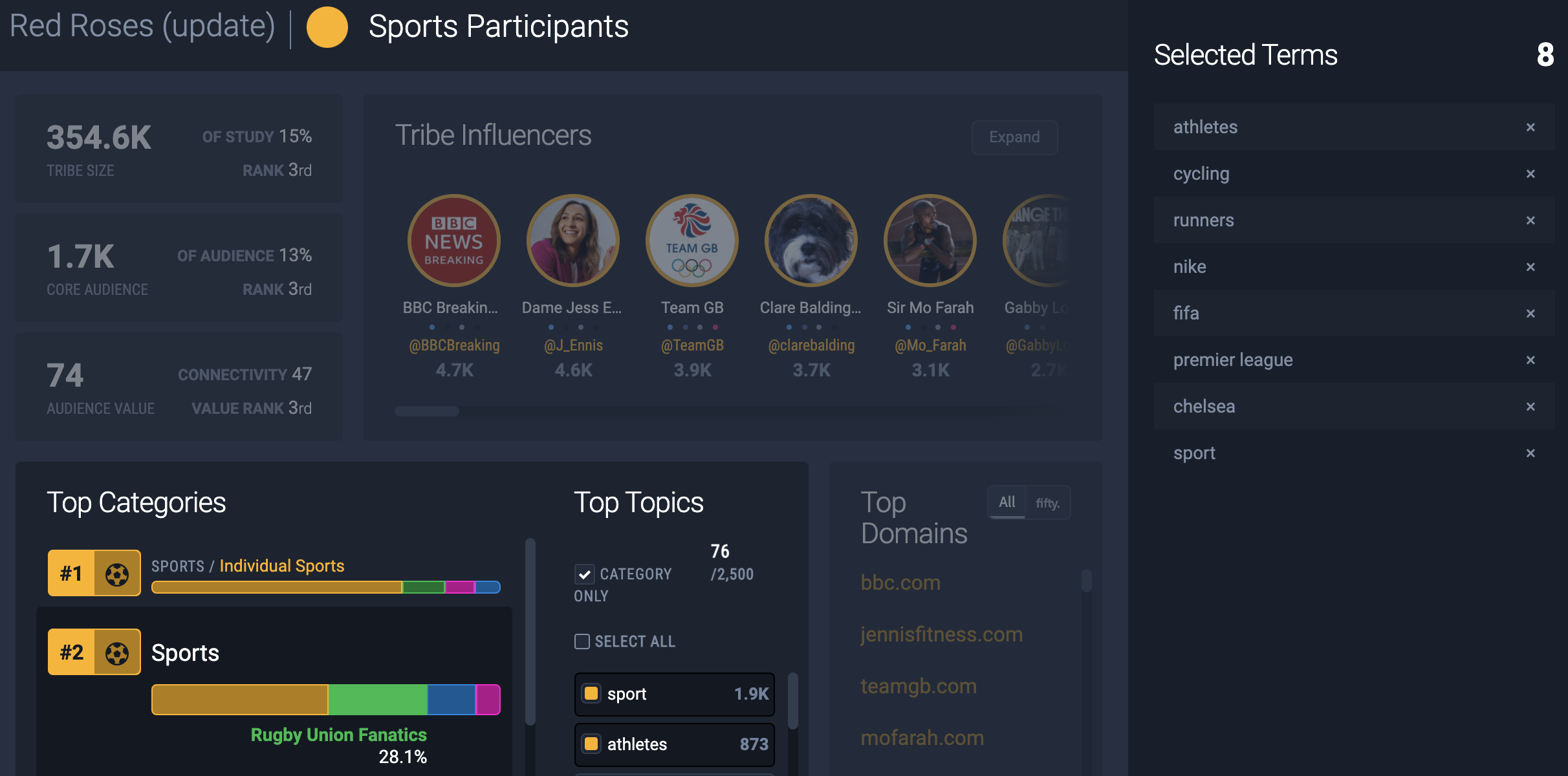The digital advertising landscape is in a state of flux. It seems every few weeks there is a new announcement related to privacy. Google announced in January 2020 that it would phase out supporting third-party cookies beginning in 2022. In June 2021, it announced the ban would be delayed until 2023, with Vinay Goel, privacy engineering director for Google's Chrome browser saying in a blog post: “It's become clear that time is needed across the ecosystem…[in order to] get this right”. Even Google can’t quite figure out how it's going to make money from digital advertising while respecting privacy.
Meanwhile, Apple is moving full steam-ahead on positioning itself as a privacy-first tech company. Its iOS 14 updates gave users the power to opt-out of being tracked in-app, while its recently released iOS 15 brought even more privacy options for consumers. People can now log onto websites with anonymised email addresses and the update also includes a new privacy solution: Private Relay, which can mask IP addresses and prevent companies from determining a user’s location without their consent. Both put a damper on data providers’ plans to work around a cookieless system with new methods of targeting such as Unified ID 2.0, which uses email addresses.
What we are witnessing is a tug-of-war between the largest players in tech today, to determine what the future of data privacy should look like. For advertisers, publishers and businesses, the tussling can be frustrating and costly as they seek out solutions that are future-proof.
The problem is most people are focused on the wrong thing. They are focused on how the death of the cookie will limit their ability to target and retarget. At Fifty, we believe that prospecting throughout the tunnel, using next-generation contextual processing combined with audience insights, is a more sustainable way to get high conversion rates without invading anyone’s privacy.
This White Paper will explore why privacy solutions are paramount, the benefits of focusing on prospecting, how new technologies are changing contextual and how advertisers’ can future-proof their businesses.
Consumers’ Growing Privacy Awareness
There are inordinate amounts of data being produced everyday. According to IBM, approximately 40 trillion gigabytes of data were produced in 2020 – the equivalent of 1.7MB of data created every second for every person on earth. Consumer awareness of how their web activity leaves data breadcrumbs has risen in recent years, and with it concerns over privacy. According to Integral Ad Science, nearly nine in ten (87%) of UK consumers now understand their browsing data will be used for advertising purposes and 94% say data privacy is a key concern for them.
The European Union’s General Data Protection Regulation (GDPR) was transformational for the digital privacy landscape. It was the first legislation of its kind, mandating privacy controls for personal data. Now, Gartner predicts that 65% of the world’s population will have its personal data covered under modern privacy regulations by 2023, up from 10% in 2020. “With more countries introducing modern privacy laws in the same vein as the GDPR, the world has reached a threshold where the European baseline for handling personal information is now the de facto global standard,” says Nader Henein, research vice president at Gartner.
While regulations like the GDPR and the California Consumer Privacy Act of 2020 have grown consumers’ awareness over data privacy, the biggest drivers of awareness have been high profile data breaches as well as the COVID-19 pandemic, when discussions about data, especially health data, have increased. Only 25% of consumers say regulatory changes drive their awareness as compared to 43% who are more aware of data privacy thanks to high profile breaches.
This expansion of privacy awareness also means there is a growing issue of trust between brands and consumers, especially since the situations in which consumers’ are happy to hand over their data are context-specific. According to a study by EY, 65% of consumers would share medical information with a medical institution to improve their healthcare experience, but only 39% would share their online search history with a large technology company in return for more personalisation.
Being responsible with consumers’ data – and respecting their privacy – has become a pivotal part of doing business on the web. For digital advertisers and the brands they work for, this means finding new ways of reaching your target audience without making them feel as if they are being followed around the web.
Prospecting – Or Why You Need To Start Off Right
One of the reasons that Google and Apple’s user privacy protections have shaken so many advertisers is that they severely limit businesses’ ability to retarget. In the previous advertising ecosystem, where third-party identifiers were readily available, it was incredibly easy to understand who was interested in your product and retarget using that data. “Anybody can implement a pixel and retarget on that basis,” says Olivia Liman, Client Director at Fifty. But by Apple making tracking an ‘opt-in’ affair, advertisers have less access to the data needed for retargeting. Indeed, opt-in rates stand at 17% in July 2021 – meaning that more than 80% of Apple iOS mobile users are not allowing apps and advertisers to track them.
This is why prospecting is becoming much more important, not only at the start, but throughout a campaign. “Prospecting is more of a skill,” says Liman. “In this landscape, you have to be really strong on prospecting, which means having the insight capability that is as quick, dynamic and scalable as when you could retarget using pixels.”
Previously, companies could cast a wide net when prospecting, and then rely on pixels to deliver the retargeting data that would narrow a pool of potential customers to those who had moved from the awareness to the consideration stage of the funnel.
But what do you do if you can no longer prospect blindly and count on retargeting to filter the engaged customers from the rest? You need accurate insights that deliver strong prospecting.
If you have insights that are delivering you a strong, accurate prospecting audience, you are more likely to succeed at your targeting from the get go. But more than that, if you continue to prospect throughout your campaign, you can ensure that you are focusing your advertising in the right place and towards the right audience. “You need to use prospecting data at all stages of the marketing funnel,” says Simon Eaton, UK Commercial Director at Fifty. “Previously conversions were focused on retargeting but prospecting along the funnel with better insights will deliver conversions. Without that retargeting capability anymore, we need to be more inventive with our prospecting.”
But how do you do that? What insights do you need for better prospecting? And how can this be done in a privacy-first way?
Red Roses: A Case Study In Why Insight Matters
Smarter prospecting and more efficient targeting starts with better insights. You need to understand who your audience is in order to speak to them in a relevant way. Having audience insights means you can understand people’s actual interests and passion points.
Take women’s rugby for instance. In 2019, the Red Roses, England’s national rugby team, came to Fifty with a problem. They wanted to sell more tickets to women’s matches, but they didn’t actually know who watched women’s rugby. How were they supposed to speak to an audience they knew nothing about? They couldn’t just assume that people who watched men’s rugby would also watch women’s rugby. Our solution? To create bespoke audience insights that we could then build a prospecting strategy off of.
Our Fifty platform uses network science and graphing technology to build an understanding of human behaviour, based on people’s shared passions and interests. Using machine learning and AI, we algorithmically identify patterns to reveal similar passions and cluster people into communities of shared interests that we call Tribes.
Using an entirely bespoke approach, Fifty undertook a social study not of the Red Roses, which is the official account of both the men’s and women’s teams, but of prominent players on England’s women's team. By mapping out players, and examining the overlapping tribes between them, we could then build a holistic picture of the types of consumers’ who care about women’s rugby and who would be prone to purchasing tickets.
We uncovered tribes like Sports Participants, who were fans of sports non-profits like Women’s Sports Trust and organisations such as ParkRun UK as well as Olympic athletes like Bradley Wiggins. Their love of sports, and not just rugby, gave the RFU new marketing opportunities for ad placements.
Another tribe, Female Fitness Fans showcased a passion for nutrition, health and exercise. Predominantly a younger audience, they certainly didn’t fit the typical rugby fan segment.
By using our audience intelligence to inform marketing strategies, the RFU saw record-breaking attendance at both fixtures. One of the matches was the most well attended female game that didn’t follow a men’s match – a more typical way to convert attendees.
How To Future-proof Your Targeting

So we have established that the right kind of insights can deliver greater understanding of an audience. But these insights have to be gathered and implemented in a compliant way that is not reliant on cookies or other third-party identifiers that could go the way of the dodo any time Apple does an iOS update.
The answer is contextual. But not contextual as you know it – where a computer uses natural language processing (NLP) and machine learning algorithms to read a page’s context and make assumptions about its readers. What is needed is insights-powered contextual that delivers high-performing advertising because it truly understands your audience – this is human-centric marketing – this is FiftyAurora.
“Marketing and advertising have never been about cookies or identifiers, but real people - human beings,” says Rob Webster, Fifty advisor and co-founder of Canton Marketing Solutions, a consultancy aimed at helping brands take control of their digital marketing activity. “Digital marketing is a great discipline but too much of it has been focused on digital IDs, which not only fail to define humans, but actively damage their interests and consideration by risking their privacy and, ultimately, by not treating them as people.”
FiftyAurora helps advertisers to understand the real world tribes that engage with their brand or are likely to convert and reach them as an audience, in a cookie- & ID-free contextual manner. And since all our data is live and dynamic, it allows advertisers to prospect throughout the funnel, ensuring they are creating qualified prospects that will convert.
The days of just blindly picking keywords based on the pages that you think are relevant to your campaign or audience are archaic and incredibly polarised. We are transforming contextual targeting by grounding it in audience insight so that we can demonstrate, rather than assume, what an audience is motivated and engaged by. FiftyAurora provides a holistic approach to real-time prospecting and targeting that is future-proof and privacy-forward.
Key Takeaways
The days of pixel-driven retargeting are over. Focus on prospecting throughout the funnel to get results.
Prospecting is a skill – to ensure you’re prospecting efficiently you need audience insights.
Treat privacy as a brand pillar. Privacy and compliance are of the utmost importance – you need to ensure your ad-tech is compliant but can still power growth.
People still need good, relevant advertising. A better understanding of your audience means you can deliver them the advertising they need, when and where they want to see it.
Fifty’s insights capture the motivations, behaviours and interests of an audience, ensuring you have qualified prospects from the start. Combined with FiftyAurora which is cookieless and ID-free, we can deliver powerful prospects for a privacy-first era.
To find out more about how Fifty builds campaigns that power growth while protecting privacy, get in touch.






















